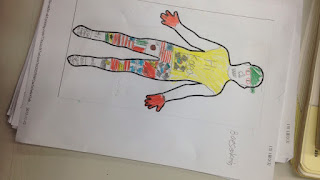
After an INCREDIBLE 2 month vacation (Korea has their long break in the winter-time) which you can read about on my personal blog, I am ready to start a new school year and finish my grant year strong. In order to do so, I think it's critical to reassess my vision and goals, assess my progress and and adjust where necessary.
Teacher friends, if you have a chance, I really reccomend this process as a good re-centering exercise! My favorite graduate school professor said that what truly defines a good teacher is their ability to reflect on their teaching. Regardless of skills, strengths, and weaknesses, if you can reflect and adjust your practice, you will have an impact as an educator.
So, without further ado, here are my visions and goals for the new year.
My (Updated) Classroom Vision
Convictions
My role in the classroom is to empower students "emotionally, socially, intellectually, and politically" through active, holistic english-learning activities.
As bell hooks states in "Teaching to Trangress," I hope to "enter classrooms with the conviction that it was crucial for me and every other student to be an active participant, not a passive consumer."
I will also work towards self-actualization as an educator, realizing that, again quoting hooks, "there is an aspect of our vocation that is sacred; our work is not merely to share information but to share in the intellectual and spiritual growth of our students."
Vision
Students will leave my classroom feeling: validated, confident, and happy.
Traits I hope to develop in my students are: open-mindedness, social consciousness, confidence, and self-awareness.
Big Goals
1. Students will improve their ability to speak English confidently and comfortably.
2. Students will celebrate individual and global differences and know better how to meet them later on.
3. Students will improve their ability to work in groups, problem-solve, and treat others with kindness and respect.
Indicators
1. More than 80% of students actively raise hands and participate.
2. Small groups and partners are on task 90% of the time.
3. Students know what to do when they enter the classroom and throughout the class period.
4. Students will use English in the classroom 80% of the time.
5. Verbal indicators such as kind or encouraging words to friends, engagement with the content in private conversations, expressions of enthusiasm for course or subject.
There you have it. Now, to plan routines and first day lessons! I'd love to hear suggestions or your classroom goals!
























